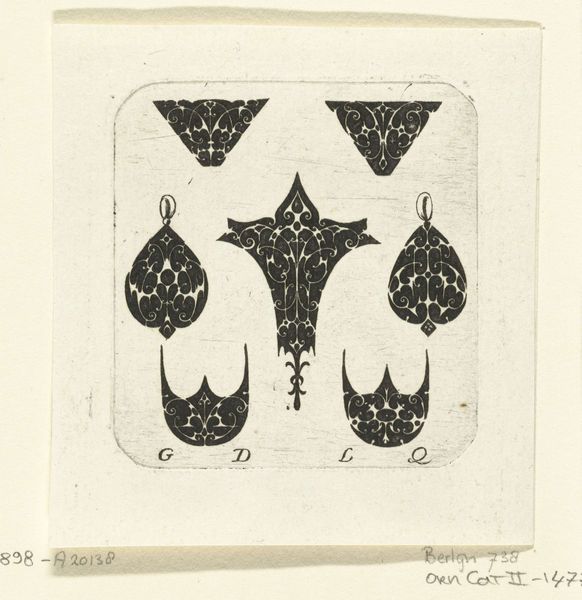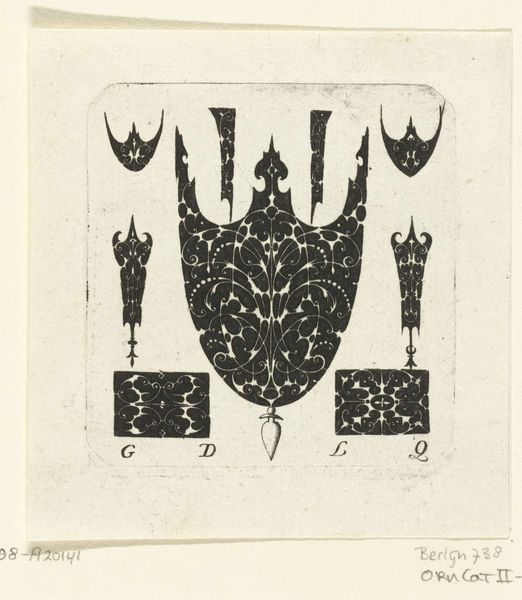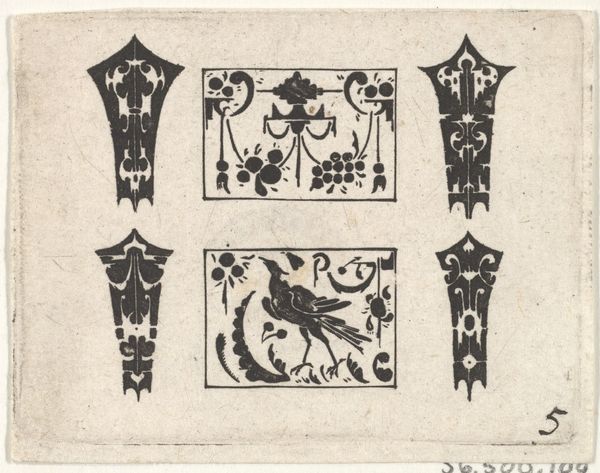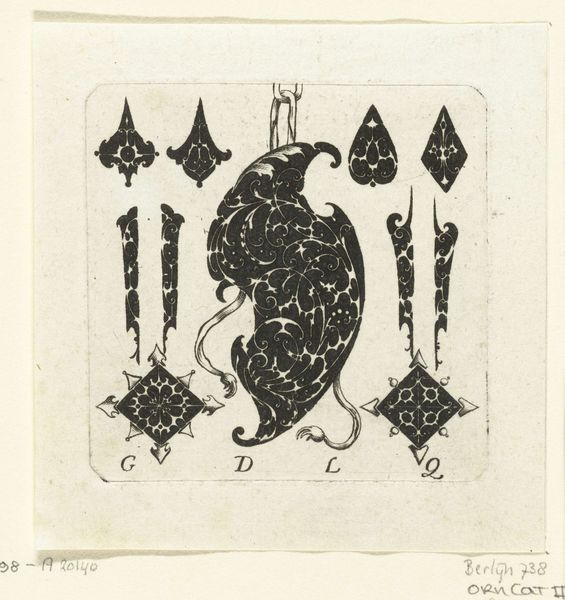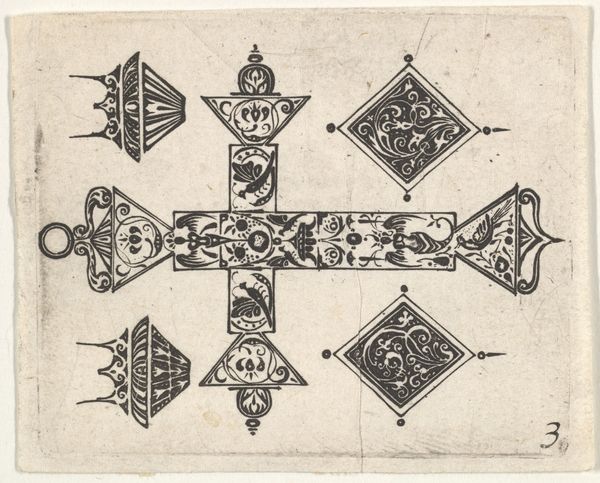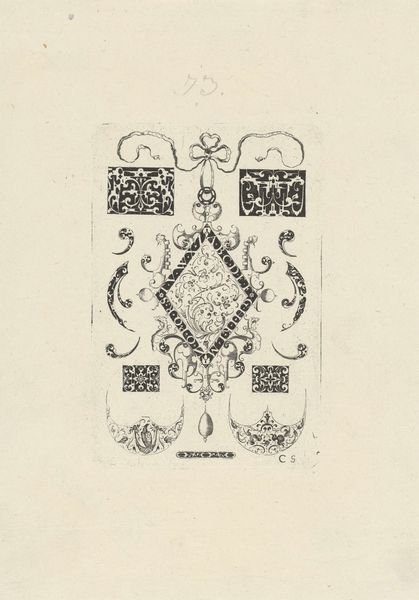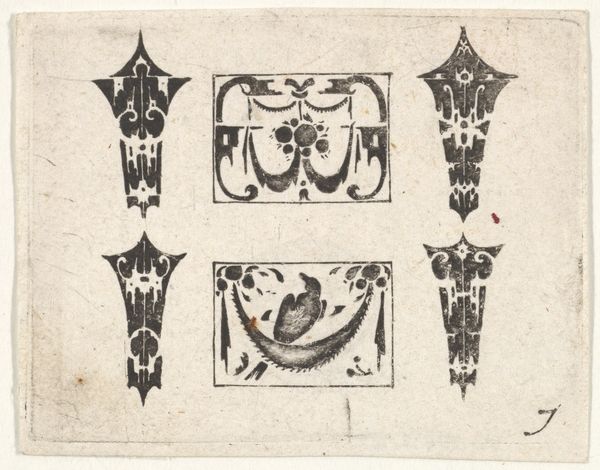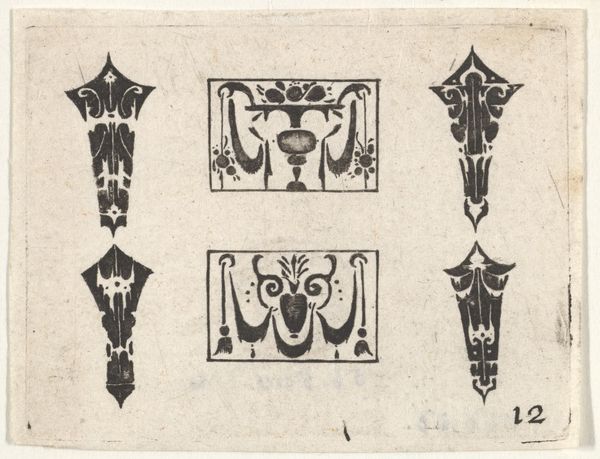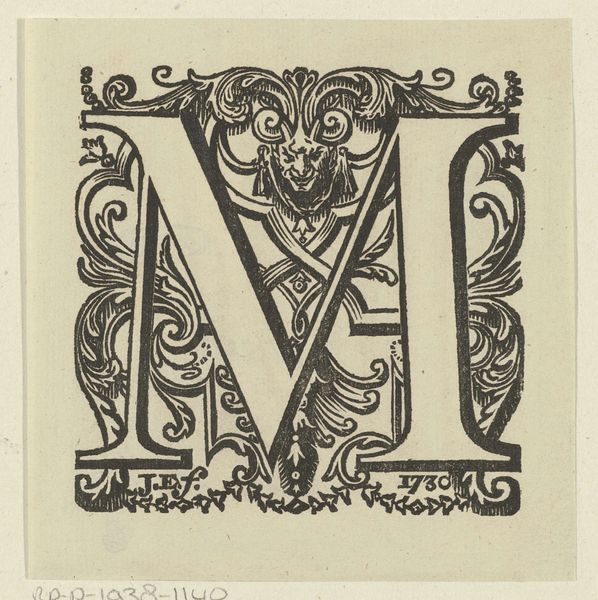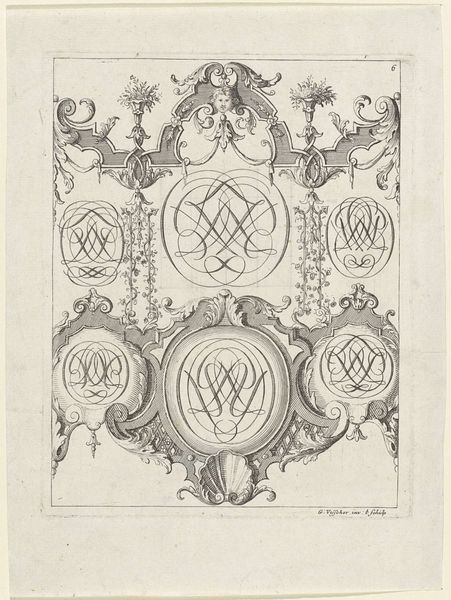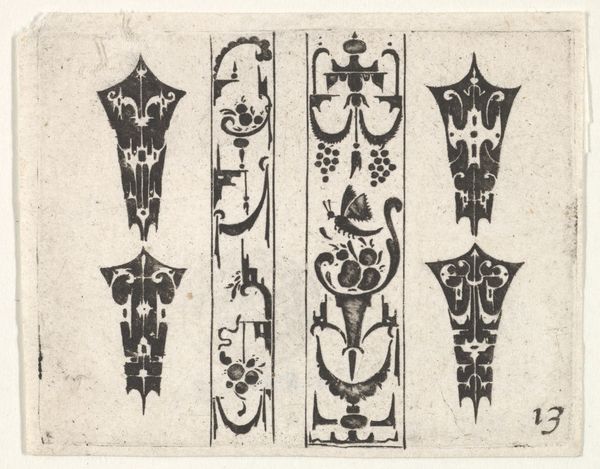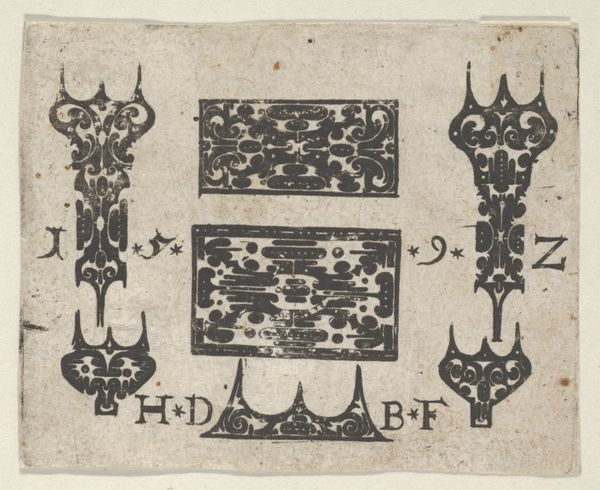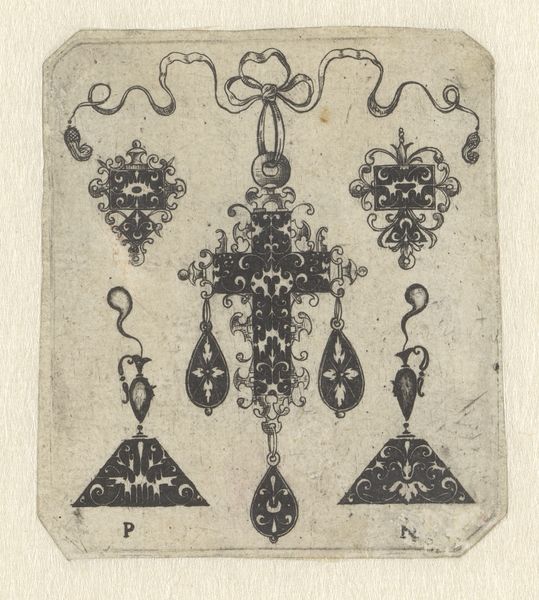
print, metal, engraving
#
baroque
# print
#
metal
#
form
#
geometric
#
line
#
engraving
Dimensions: height 65 mm, width 60 mm
Copyright: Rijks Museum: Open Domain
Curator: Guillaume de la Quewellerie’s engraving, "Kruis tussen acht ornamenten," created in 1611, is on display at the Rijksmuseum. Editor: Woah, my first thought is how hardcore Baroque it looks! So intricate, almost aggressively decorative. It’s mesmerizing in a slightly unsettling way. Curator: It's quite representative of the Baroque love for elaborate ornamentation. Here, the central cross form is almost overwhelmed by the swirling embellishments within it. The artist's strategic use of geometric forms alongside is fascinating. The eight surrounding motifs, each contained within geometric shapes – teardrops, diamonds, and more abstract curved forms– seem to play with traditional Christian symbology. Editor: It definitely feels like there is symbolism at play here. It’s like he’s taken religious iconography and turned it into… high fashion wallpaper! It is also compelling how stark the black ink against the background seems. What’s that effect meant to do, besides look amazing? Curator: The stark contrast in prints like these from the 17th century was highly intentional. The clarity served to emphasize not just the forms but the ideas they embodied; line work like this has long-standing impact because it is direct in communicating visual ideas. This kind of visual language relies on clarity of symbolic form, even with ornamental complexity, and was integral for widespread cultural transmission, for both secular and religious uses. Editor: Secular too? That's a surprise. Because even with the intense design work, the first thing I recognize is still that central cross, and how everything else works its way around the central religious icon. Curator: Indeed. Remember, many Baroque artists straddled both worlds, designing everything from altarpieces to emblems for noble families. This particular piece, given its title and composition, certainly hints at a devotional purpose. We must also recall that these "ornaments," these prints were also practical models and designs for craftsmen: jewelers and other artisans would take inspiration to create physical objects in metal from prints exactly like this. Editor: So, it is a design for...other art? Wow! It gives it a meta-quality that feels super modern, doesn’t it? Okay, now I'm starting to really appreciate the layers here. It is more than it seems. Curator: Precisely! These ornamental prints acted as crucial nodes in the dissemination of style and visual vocabulary during the Baroque era. It makes us think about cultural meaning, purpose and even fashion circulating through art from one creator to the other. Editor: Absolutely, thinking of it that way gives me a completely different understanding. A true snapshot of its time. Curator: Indeed. Thank you for that thought, which brings new nuance and layers to this magnificent piece, which carries multiple histories.
Comments
No comments
Be the first to comment and join the conversation on the ultimate creative platform.
